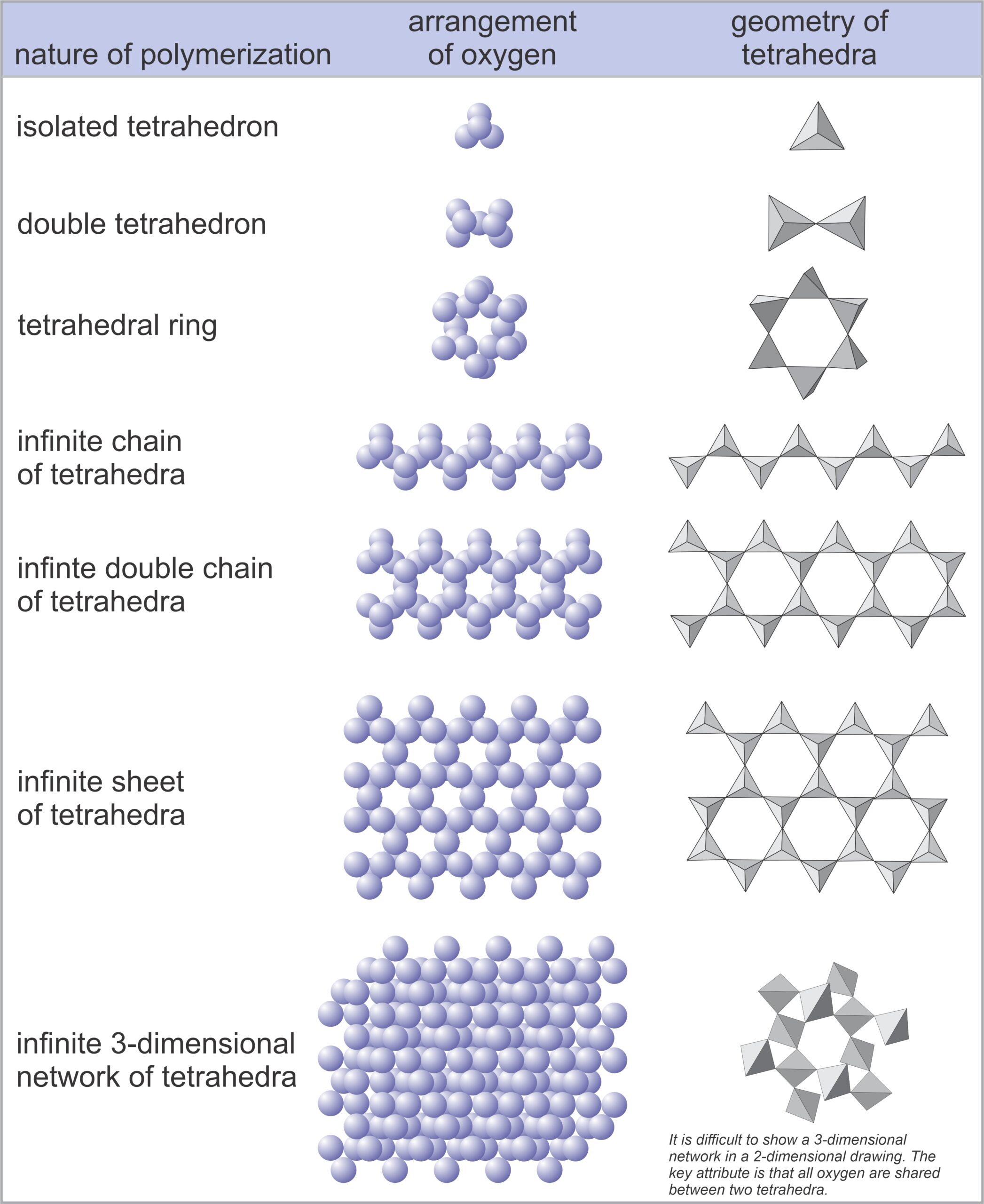1.4.1: Subclasses, Groups, and Smaller Divisions
- Page ID
- 18284
The mineral classes listed above are conveniently subdivided into subclasses, groups, series, or subgroups until finally reaching individual species. For example, consider minerals of the silicate class. Silicates make up more than 99% of the minerals found in igneous rocks and account for more than 90% of the Earth’s crust and mantle. Because the silicate class contains many important minerals, we divide it into subclasses.
![]()
1.32 Three views of a silicon tetrahedron
In silicates, except for very rare high-pressure minerals, all silicon atoms are surrounded by four oxygen atoms – arranged in the form of a tetrahedron, a pyramid shape with four identical faces. We can depict the tetrahedra in several ways; Figure 1.32 shows several examples. In mineral structures, these tetrahedra may share oxygen atoms to form chains, sheets, or three-dimensional networks. The linking forms atomic structures called polymers. We name the silicate subclasses according to how silicon tetrahedra are linked (polymerized). Figure 1.33 below shows the possibilities.



